I’m sipping a coffee in the panorama car and counting castles outside my window, each planted atop a snowy hillock in Switzerland’s Canton Graubünden like a lonely chess rook. While I think there are seven or eight castles visible from the train, I’ve only counted three so far. Each is a portal to its illustrious past, with a noble history involving Hapsburgs, Romans, Swabians, Allemani, Carolingians, and renegade Helvetic and Rhaetian celts. Each tells a story of this rugged and fantastic landscape, pressed up against the Italian border, but defined by invisible seams that separate Romansch-speaking alpine communities from the Swiss-German and Italian speaking lowlands.
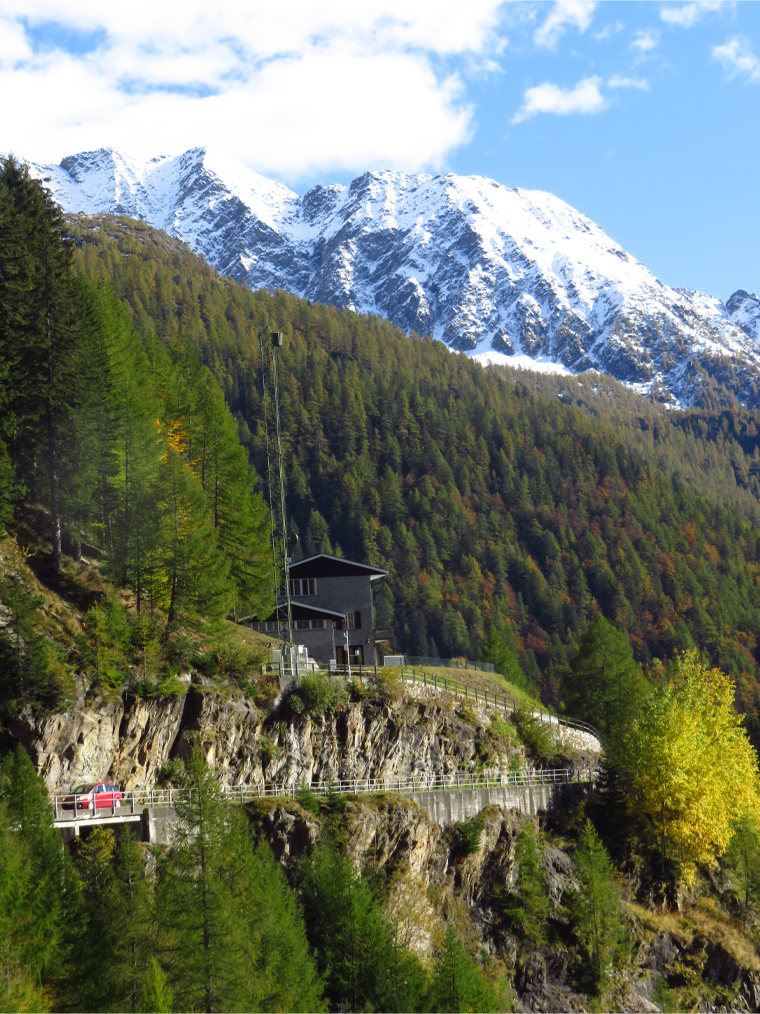
I’ve taken this train route many times before and it never gets old to me. I’m on Switzerland’s Rhäetische Bahn railway.
It’s one of only three trains inscribed on UNESCO’s World Heritage List (the others are in Austria and India). My journey on it will take me past Romanera churches and Celtic archeological remains and bubbling hot springs, national parks, glaciers, mossy forests, palm trees, and more castles than a Game of Thrones season.
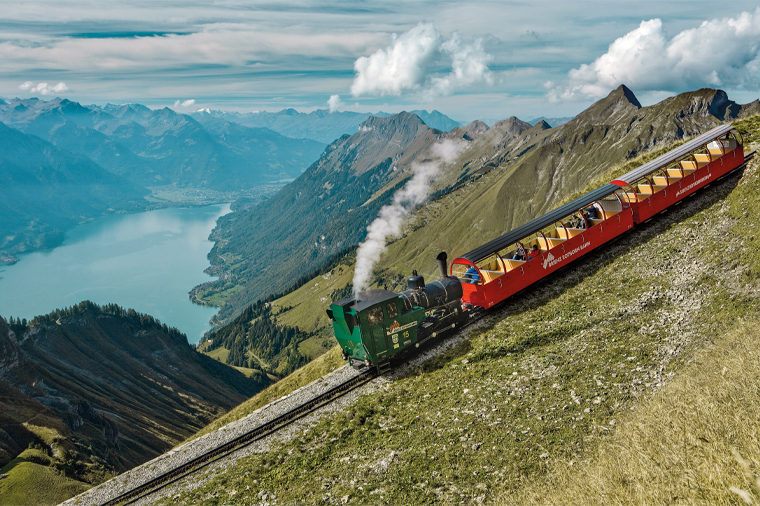
The entire Rhäetische Bahn rail network, located in Canton Graubünden, includes 84 tunnels and 383 bridges, and stone viaducts that make it a masterpiece of rail ingenuity. To ride this train is to understand Swiss engineering, European History, natural history, physics, and gravity all at once. So close are the elements of nature, and so connected is the region’s heritage, that you cannot ride for a single stop without coming face to face with some of it. Fleeting glimpses of the landscape move fast across my window, and before I can take a picture, the next tableaux appear. A gushing waterfall is suddenly replaced by a hemlock forest, which is replaced by a snow capped mountain and then a church. Unfix your gaze from the window for three seconds, and you’ll have missed something epic.
I’m not a train geek, I swear. But I live in Switzerland, where it’s hard not to be eternally impressed with the country’s trains, which routinely careen through century-old tunnels, chug up and down alps, blaze past rivers and lakes so dreamy blue, you feel as though you could fall in from your seat. Ask any local or expat in Switzerland, and they will probably agree that Swiss trains are one of the best things about living here. But how do our trains differ from the rest of the world?
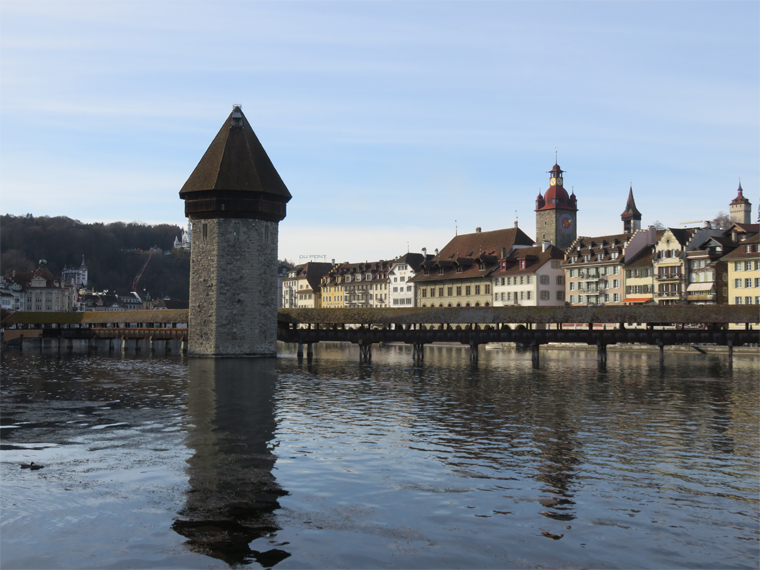
For starters, Italy, France, and Germany have large high-speed trains to serve their large, high-speed countries. Ours are cozy, slow, and scenic. They are hydro and electric-powered, so infinitely more efficient and sustainable than England’s romantic, but diesel guzzling carriages. And our corduroy upholstered seats and carpeted floors, and windows that open to fresh mountain air are roomier and more flexible than the fluorescent lit and overheated Shinkansen saunas that bullet through Japan.
According to the Swiss constitution, public transport must reach every single Swiss village, and the staggeringly precise train schedule which is a balletic matrix of timing and punctuality, does a good job of that, working closely with busses, boats, funiculars, and cog railways to get people around. If all that weren’t enough, our diner cars boast Art Deco-styled banquettes where you can order a glass of local wine and hot meal often served with porcelain tableware and plasticfree. This is our standard commuter train. Dining cars, conductor whistles, romantic goodbyes on platforms, and coffee and hot chocolate trolley service are part of everyday life for all Swiss.
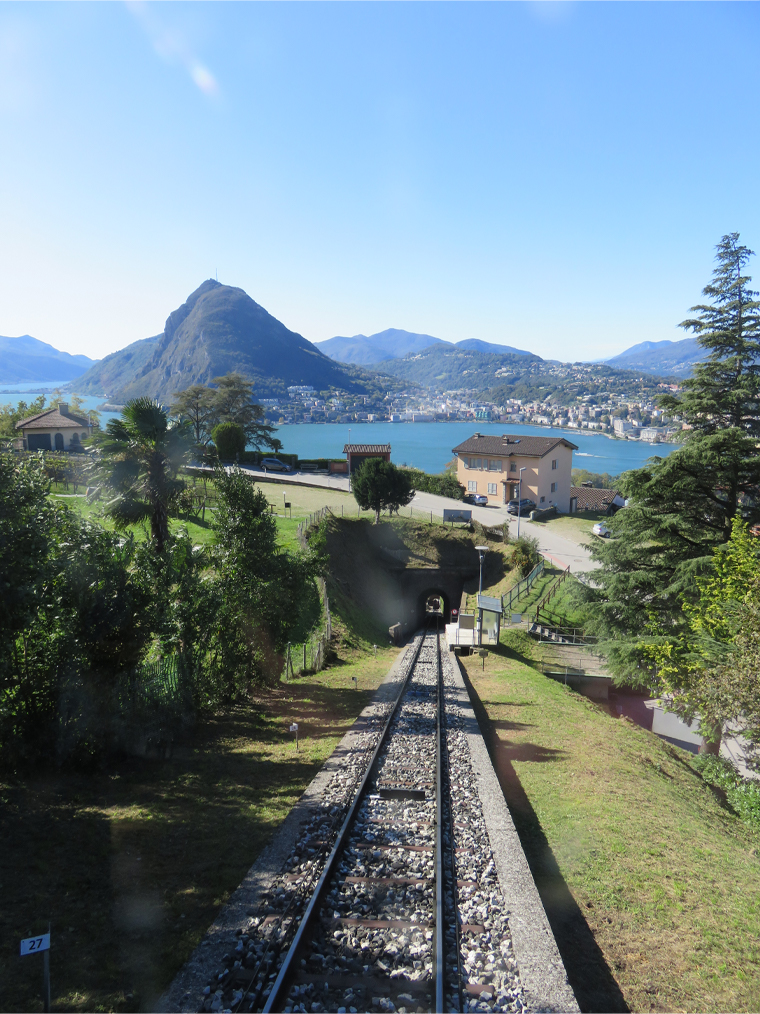
- GLACIER EXPRESS
- GOTTHARD PANORAMA EXPRESS
- GOLDEN PASS LINE
- RHäTISCHE BAHN
Glacier Express
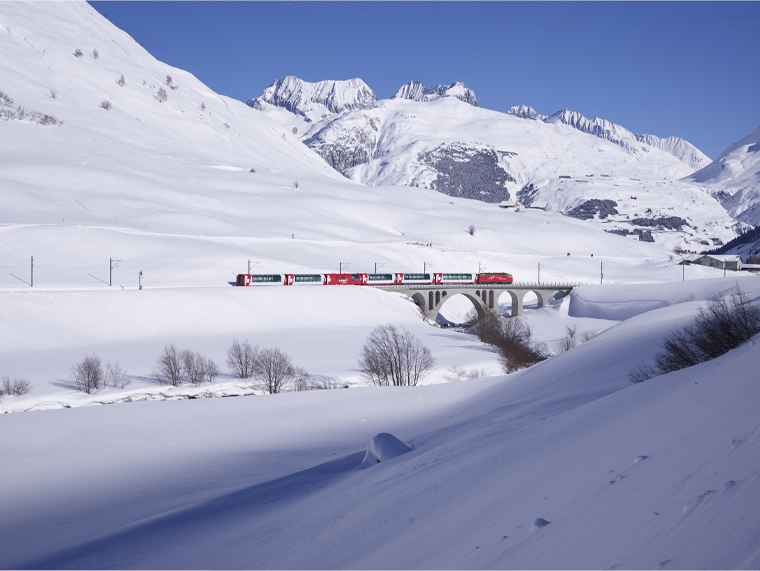
While most trains in Switzerland are for locals, some scenic trains are specifically designed for tourists, which are most accessible with a Swiss Travel Pass. If one wants to experience all panoramic trains in one trip, then it’s best to embark on the Grand Train Tour of Switzerland, which is a route combining the most scenic train lines of the country. The first is the Glacier Express, a seven-hour journey that travels from Zermatt to St Moritz across Switzerland’s alps. I’ve taken it a few times but recently experienced its newly launched Excellence Class on a rainy October day. We departed from Zermatt at 9 a.m. while the Matterhorn was still radiating pink from its morning alpenglühen. Porters greet passengers in Excellence Class at a red carpet on the platform. Mine took my luggage and coat and brought me the menu, a hot towel, and a glass of welcome champagne within minutes of leaving the station.
The carriage itself is the first thing I notice. It is decked with leather, silver, crystal, glossy-wood tones, and copper-hued light. The two-two seat configuration means that two white chocolate leather seats face each across wooden tables on both sides of the train. If the oversized panorama windows weren’t big enough, the ceiling is also glass. There are iPads programmed with interactive maps and detailed local information, plugs for charging your own devices, and free satellite Wi-Fi. A glitzy maple wood bar at the back of the train was stocked with whiskey and wine bottles that gloriously rattled like something out of an Agatha Christie novel as we crept past various ravines and valleys.
The route is one of the longest within Switzerland, a whopping 7.5 hours, which most Swiss themselves would never sign up for considering a four hour trip from most Swiss stations can get you to Paris, Milano, Munich, or Innsbruck.
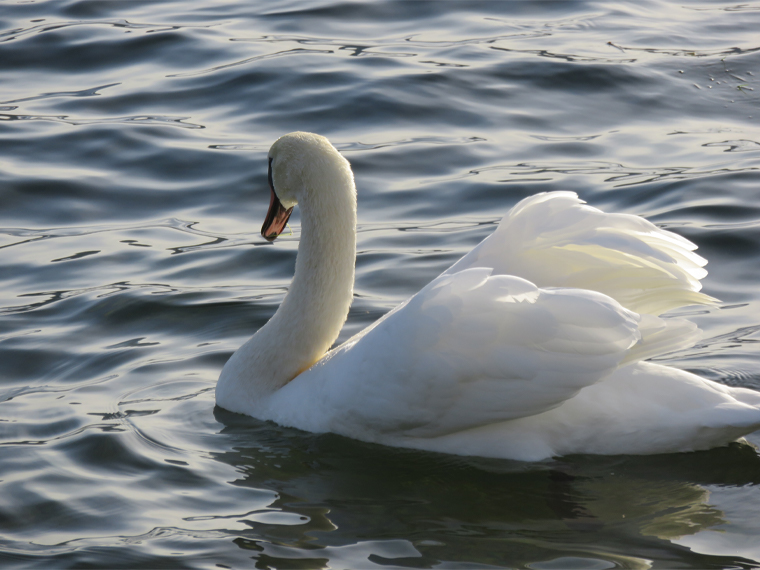
“A seven-hour trip that begins and ends in Switzerland? No thanks!” exclaimed my Swiss friend in Zurich. But for rail enthusiasts and tourists in search of Alpine heights, it’s a good match. The train’s zig-zag route traverses from Zermatt to St Moritz and glides over and through 291 bridges and 91 tunnels. It runs on the same tracks that the regular trains operate on, but it’s an uncommon route because of its high elevation. There are glaciers, lakes, vineyards, a river and waterfalls, even a lighthouse, all of which are pointed out by the Ipad audio system. But what isn’t on the iPad was even better. I spy a pair of deer that is munching grass in a meadow surrounded by arven trees, and later the elegant chocolate striped-faced of a chamois standing quietly on a fog-cloaked ridge.
I’ve hiked these alps for a decade, so I felt I knew this Swiss landscape well, but the audio guide teaches me a lot more than I thought it would. As my train glides past the weathered Walliser mountain huts, I learn how hardscrabble sixth-century
immigrants from the Allemani tribe of celts across the Rhine settled the landscape and became Wallisers. As we pass the village of Ritzingen, I discover that the Swiss culinary and hospital hero Cesar Ritz hails from the village. All the while, I tucked into pea mint soup topped with a dollop of double cream sprinkled with colorful wildflowers, and for a main dish, tender Swiss beef with fluffy mashed potatoes. The wines — Swiss, of course — were excellent too. A mineral white from Domaine de Chevaliers in Canton Valais makes a great aperitif, while a slightly oaked Lux Vina assemblage rouge is an ideal pairing for the beef.
- GLACIER EXPRESS
- GOTTHARD PANORAMA EXPRESS
- GOLDEN PASS LINE
- RHäTISCHE BAHN
Gotthard Panorama Express
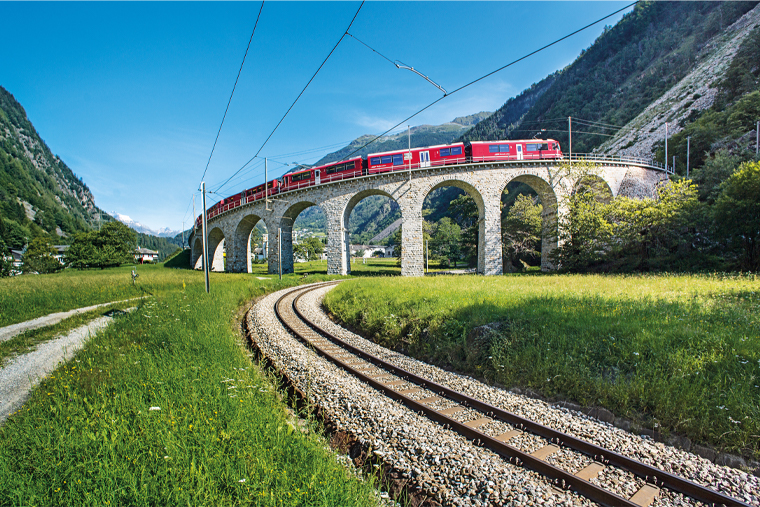
In 2016, the Gotthard Base tunnel opened after 17 years of engineering. 57 kilometres long, it remains the world’s longest tunnel and connects Swiss German-speaking Canton Uri to Italian speaking Canton Ticino, from Göschenen to Airolo. This is also one of the fastest north south axis points in Europe, so it’s used by many in northern and southern Europe to cross the Alps. The new tunnel cut down the journey time by over 45 minutes, and the subsequent Ceneri Tunnel opened in 2020, reducing the journey by another 30 minutes. But nostalgic train enthusiasts soon lamented the loss of alpine views and famous sights from the former tracks. Hence, the birth of the Gotthard Panorama Express, a heritage tourist train running on the existing tracks. No other train in Switzerland crosses such a magical threshold leading from the grey skies of the German-speaking Urner alps to the palm trees and sun-kissed steep-sloped hillsides ripe with merlot grapes in Switzerland’s Italian-speaking Ticino. These seams of Europe are a delight for geographers and travellers who like to study the nuances on each side, and the train offers several intimate views of mountain life, wild encounters, and audio calling out the highlights as you go.
One such lamented loss was the Wassen Church in the village of Wassen. For southbound travellers over the last century, its oxidized onion-domed topped campanile was long a hint of what’s to come after the pass. Outside, the baroque church dating from the 18th century is a subdued mountain sanctuary. Inside, it’s a riot of gold leaf and catholic iconography few have witnessed. But nearly everyone in Switzerland has seen the outside multiple times because of the old double loop of the twisting track design. This makes the church visible three separate times on a single passing, but somehow it looks slightly different
each time.
This train also dwells in the realm of Switzerland’s birthplace. It passes Altdorf and Bürglen, hometowns to demi-mythical Swiss hero William Tell and his son whose head he famously shot an apple off in exchange for freedom from the tyrannical Habsburg henchman, Albrecht Gessler. When Gessler refused the promised release, Tell allegedly assassinated him, kickstarting the Four Founding Forest Cantons, which led to the creation of the Confoederatio Helvetica and eventually the nation of Switzerland. The train recounts some of this and provides access points to the region’s historical sites like Tell hiking trail, the Schiller Stone, Tell’s Chapel, and the lakeside Rütli meadow where the oath was allegedly taken and today a favourite of tourists and classroom field trips alike. If making the full trip, you will complete it with a portion on a steamboat from Lucerne to Flüelen coursing over dazzling blue Vierwaldstättersee (Lake Lucerne) surrounded by a pastoral cow and hut-strewn mountains rich with green pasture and wildflower meadows. This is the storybook Alpine Switzerland that so many dream about and it delivers on every single count, even for locals like me who’ve seen it all a hundred times. Central Switzerland never fails to inspire and dazzle.
- GLACIER EXPRESS
- GOTTHARD PANORAMA EXPRESS
- GOLDEN PASS LINE
- RHäTISCHE BAHN
Golden Pass Line
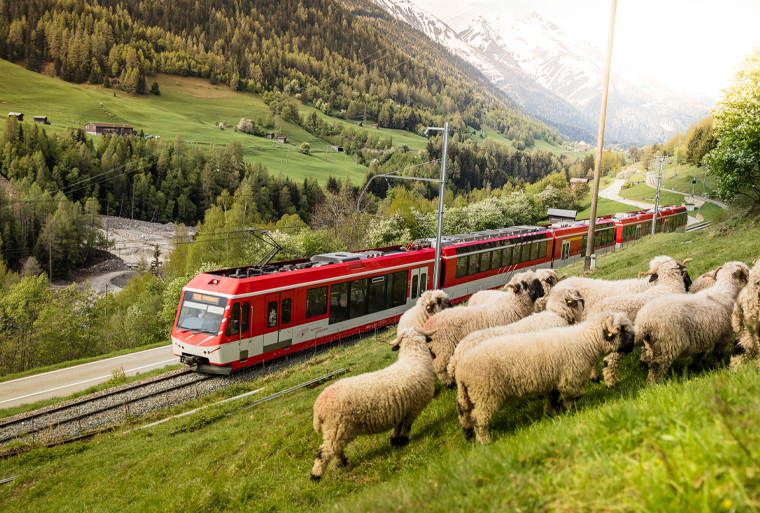
The car’s champagne gold exteriors, quilted velvet green seats, brass fittings, and bevelled opal windows conjure up mystery and glamour and recall a golden era of train travel. And it bypasses some glamorous spots; the Dents du Midi, Chamby, where Ernest Hemingway lived and eventually crosses the röstigraben, the linguistic divide separating French-speaking Switzerland to Swiss German-speaking.
Gstaad itself is the epitome of power powder. The quaint but moneyed ski resort has all the charm of an alpine village with a whopping dollop of glamour (read: cosy chalets converted to Ralph Lauren and Cartier shops). It also has a decidedly French flair, despite being located in Swiss German-speaking side. Nationalities and languages aside, Gstaad’s historic docket of celebrity visitors reads like the list of a fabled epic Oscar party including Monaco’s Prince Rainier, Grace Kelly, Richard Burton, Liz Taylor, Michael Jackson, Audrey Hepburn. Most recently, it’s seen contemporary notables like American actress Anne Hathaway fashion icon Valentino who bought a chalet here in 2014.
From Gstaad, tourists and outdoor sports enthusiasts flock to Glacier 3000, a more than 3000 metre-high snow park complex that includes a rollercoaster, numerous toboggan runs, a Bavarian curling centre, dog-sledging runs, and romantic winter sleigh rides. There’s also an upgraded Snowpark, beloved by skiers and freestylers and featuring line jumps, rails and a massive launch called Big Air, designed by French professional snowboarder Arnaud Kugener.
- GLACIER EXPRESS
- GOTTHARD PANORAMA EXPRESS
- GOLDEN PASS LINE
- RHäTISCHE BAHN
Rhätische Bahn
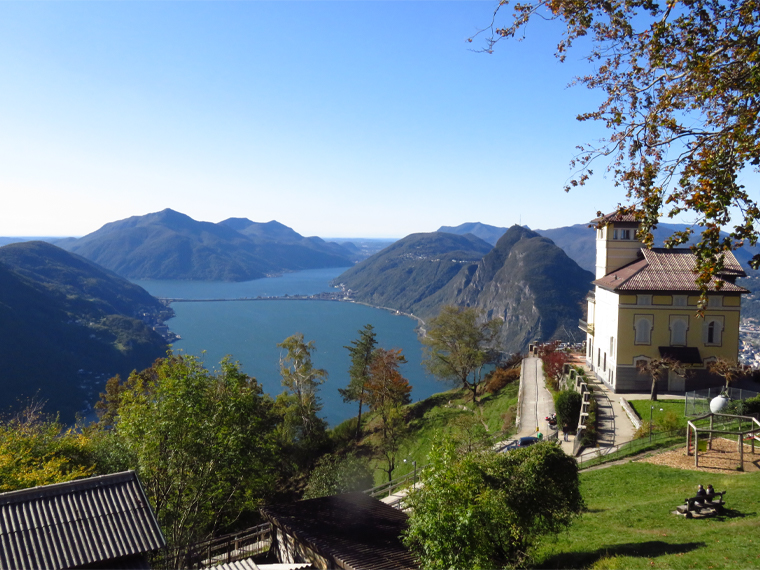
By far, my favourite train in Switzerland is not a tourist train at all, but a regular passenger train that happens to be Unesco inscribed. The aforementioned Rhäetische Bahn where I counted chess rooks and pondered kings and queens and pawns of yore encompasses several incredibly scenic lines across Switzerland’s rugged and remote Graubünden, the nation’s largest canton lauded for its diamond dust skies and chic après-ski areas like St Moritz, Davos, and Klosters.
Heading south from the medieval town of Tiefencastel, the train snakes around a few wooded valleys and hugs one final curve and before dramatically leaping out over the 213-foot high, six-arch Landwasser Viaduct, before seamlessly streaming into a cliffside tunnel. It feels almost cartoon-like during the suspended moment when the train glides across high above the aquamarine Landwasser River below. If the apex of rail design looks especially old, that’s because it’s over a century old and was built of local limestone in 1901. Be sure to sit in the front or the last car (right side if you’re southbound; left side if you’re northbound) to get the best photos of it. It’s especially lovely in winter, with the red train contrasting against the snow. But it’s just as beautiful in autumn’s orange coat or summer and spring’s green glory. The crossing only lasts less than 30 seconds, but it’s as edifying as any thrill ride.
Another favourite segment — and arguably the least travelled of the entire Rhäetian Railway — is the six-kilometre, 2.5-hour Bernina line from St Moritz to Tirano, Italy. The famous Bernina Express climbs past fragrant evergreen valleys before cresting 2,250 metres at Switzerland’s blue glacier-choked Bernina Pass and frosty Lago Bianco. The descent into Italy crosses several thresholds. While coming down, it passes Brusio’s nine-arched spiral viaduct, forcing the train to coil like a wurstschnecke (spiral-shaped sausage) and eventually empties into Switzerland’s sunny, Italian-speaking Val Poschiavo and finally passes through the Scala tunnel before unceremoniously emerging in Italy, and connecting these disparate cultures in a way that has forever changed the chessboard. If there’s a more contrasting border crossing in Europe, then I don’t know where it is.




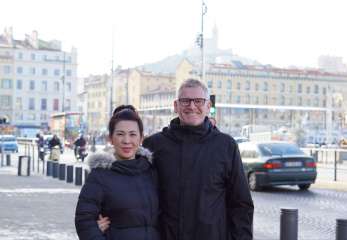
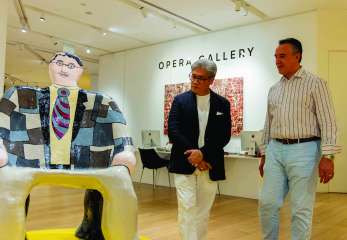
-ADiN.jpg&w=347&h=240&crop-to-fit)









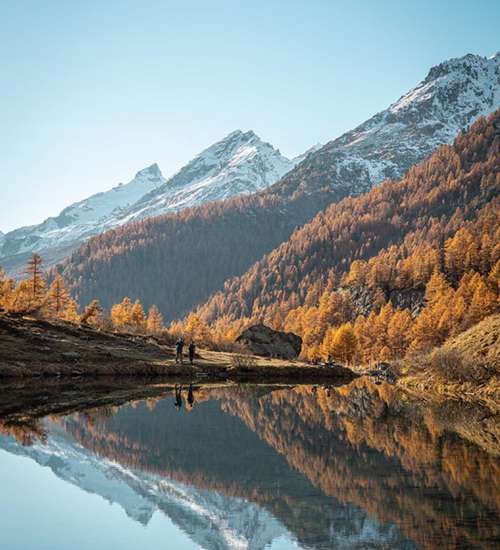
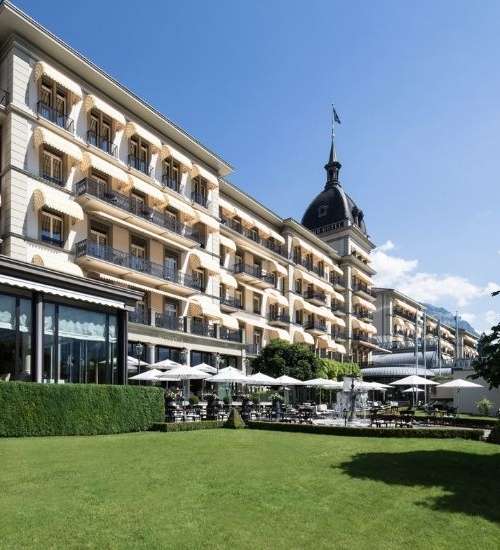
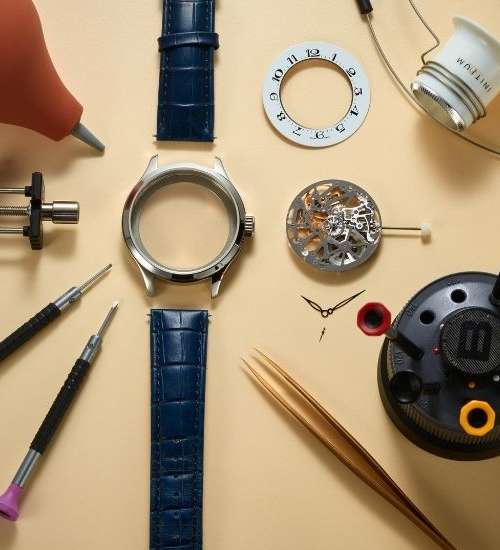
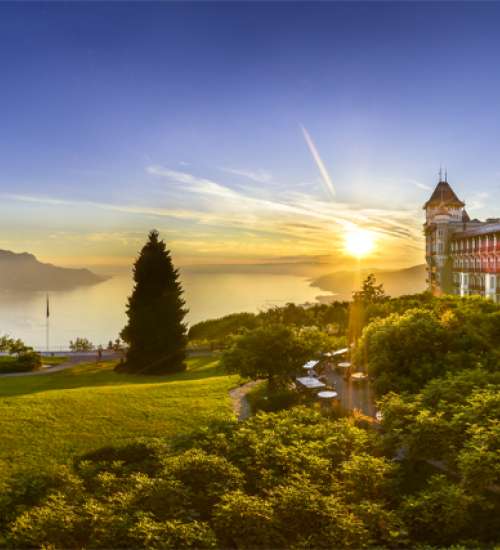
 Back
Back
